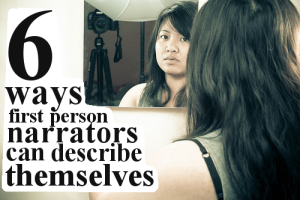People who aren’t writers don’t know the extent of background work that goes into writing a novel—how much plot, setting and character development we write that never appears on the published page.
This is a list of a few of those things.
If you find you have a flat, boring, predictable character—or possibly an unpredictable one, whom you can’t force to do anything he is supposed to do—you probably just don’t know him well enough. Here are some icebreaker exercises to get you two acquainted.
- Outline a short history of his (or her) life. Born in this type of neighborhood, went to this type of school, had these types of friends, had this first job, was obsessed with this brand of beef jerky, etc. Include all the major emotional events—moving to another town, death in the family, spelling bee won, heart broken, etc. Check every scene in your novel against this history. Does the character’s emotional reaction match his background? (I recently realized that, in my novel, I had recreated the most traumatic event of one character’s childhood, but he endured it with no signs of inner turmoil: not even a flashback. Don’t let this happen to you! Don’t waste a good chance to add drama!)
- Write a traumatic scene from his childhood. Pick one part of that history and actually write it out. It can be as traumatic as his parents’ violent deaths or just losing his mom in the grocery store for five minutes, or seeing a scary movie. This’ll help you figure out his deepest fears and how he reacts to them as an adult.
- Describe his “emotional acre.” This tip from Anne Lamott’s Bird by Bird. She says we are each born with a sort of imaginary acre of land we can do whatever we want with. Plant vegetables or hold an eternal garage sale, that sort of thing. Based on what you now know about your character’s life, figure out what’s in his emotional acre. What does he nurture, hoard, or leave to ruin? With that in mind, ask what he carries in his pockets (or her purse), or keeps in his sock drawer.
- Write a stream of consciousness piece from his point of view. Even if you’re not writing in first person (or if you are, but this character isn’t the narrator), step into his head for half an hour and look through his eyes and read his thoughts. Write down what you discover.
- Write what people say about him behind his back. How others see him will reveal a lot about him—even is it isn’t all true. How does he stand? How does he sit? How does his posture change when he is bored or nervous? Do people misinterpret his body language? What are the worst rumors about him? How much of it is true?
- Write his eulogy—as written by some of your other characters. What people say about him after his death can be even more revealing. Are they afraid to speak ill of him, or was he such a jerk that no one cares? Do they remember nice things about him they had long forgotten? Do they wonder how they’ll go on without him?
- Take the Meyers-Briggs personality test for him. Now that you’ve got a feel for him, answer this series of yes or no questions on his behalf. At the end, they’ll tell you his personality type, give you some essays about that type, and a list of fictional and real characters who have/had the same personality. Read it all!
- Give him breathing space. You may go through several drafts of your novel, the character shifting with each draft. His actions and speech will change as you learn more about him, and you may discover things about him that force you to alter your plot. Go with it. Don’t try to force him into a box. In a strange twist that parallels Judeo/Christian theology, if you don’t give your characters free will, they will be boring, soulless robots.
—
What Meyers-Briggs personality type is your character? Tell me in the comments! (I’ve got an INTJ and an INSJ.)
—









